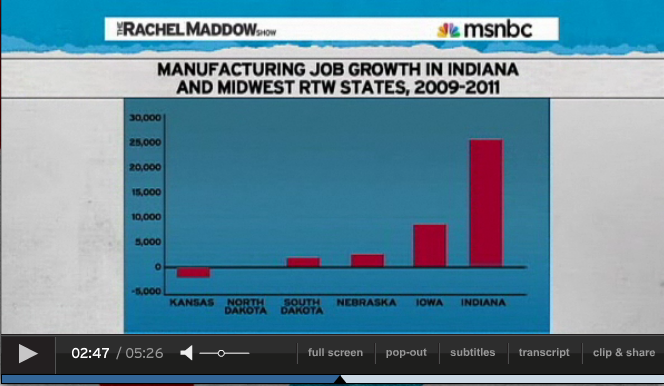A solid step in the right direction for the labor market
This morning’s release of the December 2011 employment situation report, which marked four years since the official start of the recession in December 2007, capped off 2011 on a positive note. Both the establishment survey and the household survey showed improvement — the labor market added 200,000 jobs, hours and wages were up, unemployment ticked down, underemployment dropped, and the duration of unemployment spells declined. This is a step in the right direction. However, it is important to note the context: the jobs deficit left from losses in 2008/2009 remains well over 10 million jobs; even at December’s growth rate, it would still take about seven more years — until around 2019 — to fill the gap and get back to the pre-recession unemployment rate. We need reports this strong and stronger for many years to come to bring our labor market back to health.
A New Year Highlights the Tasks Ahead
Every New Year, millions of people reflect on the mistakes and triumphs of the past year to help govern and improve the next one. Likewise, while not unfettered from the past few years of economic turmoil, 2012 gives the nation the opportunity to learn from last year’s errors and to renew our hope in a fairer society that works for America’s families.
With most forecasts predicting another year of slow economic growth and a sustained weakened labor market, EPI’s mission to promote just economic policies that empower America’s workers remains ever critical.
Though just a few days into 2012, EPI’s research has already yielded substantial results. EPI’s research on the positive effects of raising the minimum wage provided proponents across the nation with pivotal support. As a result, eight states automatically increased their minimum wages on January 1, 2012 to keep up with rising costs of living.
The New York Times noted EPI’s research in the editorial, “Falling Behind,” in Monday’s paper, January 2, 2012:
Researchers at the Economic Policy Institute have shown that the increase in wages from a higher minimum is greater than any wage decreases because of fewer hours worked. At a time of increasing inequality, America’s low-wage workers need a raise.
Numerous other top news outlets have praised these eight state governments for recognizing the need to increase their minimum wages and cited EPI’s contributions, including Reuters, Christian Science Monitor, NPR, and an additional piece in The New York Times.
- From The Christian Science Monitor: The new minimum wage laws, which also took effect Jan. 1 in Arizona, Colorado, Florida, Montana, Ohio, Oregon, and Vermont, will increase paychecks for more than 1 million workers, according to the Economic Policy Institute (EPI).
- And The New York Times: About one million minimum-wage workers will be affected by increases in the eight states, according to the Economic Policy Institute, a liberal research organization. An additional 400,000 workers who make just above minimum wage will also most likely get a raise because many employers adjust their pay distribution for all employees when there is a new minimum.
Most minimum-wage workers are not teenagers
Further demonstrating the benefits of increasing the minimum wage, EPI’s research has shown how it affects a significant number of Americans, not just part-time teenage workers as commonly believed.  This week’s Economic Snapshot shows that of the roughly 1.4 million low-wage workers who will benefit from Jan. 1 minimum wage increases in eight states, about 80 percent are at least 20 years old and 78 percent work at least 20 hours per week. The percentage of affected workers who fit the false stereotype of teenage, part-time workers is a mere 12 percent.
This week’s Economic Snapshot shows that of the roughly 1.4 million low-wage workers who will benefit from Jan. 1 minimum wage increases in eight states, about 80 percent are at least 20 years old and 78 percent work at least 20 hours per week. The percentage of affected workers who fit the false stereotype of teenage, part-time workers is a mere 12 percent.
Indiana should not adopt right-to-work law
Activists across the nation are relying on EPI’s research that disproves the notion that right-to-work laws stimulate economic growth. In Working hard to make Indiana look bad: The tortured, uphill case for ‘right-to-work,’ EPI research associate Gordon Lafer examines RTW advocates’ claims that a RTW law will raise wages and create jobs in Indiana and explains why a law would actually be more likely to reduce workers’ wages and benefits.
He found RTW laws reduce wages by $1,500 a year, for both union and nonunion workers, and lower the likelihood that union and non-union employees get health care coverage or pensions through their jobs. His studies found that RTW laws have no impact on job growth in states that adopt them.
On Thursday’s episode of The Rachel Maddow Show, Maddow cited Lafer’s research as well as EPI economists Heidi Shierholz and Elise Gould’s paper, The compensation penalty of ‘right-to-work’ laws, explaining that reduced wages occur in states that enact ‘right-to-work’ laws. View the clip.
EPI in the News
Only a week into 2012, EPI’s research has already appeared in over 300 television, print, and radio outlets. In addition to the previously noted articles, some of the highlights include the Pittsburg Tribune-Review, International Business Times, Huffington Post, Daily Kos, and the Los Angeles Times.
- EPI labor economist Heidi Shierholz explained why last month’s lower unemployment rate is not necessarily a cause for optimism to Adam Brandolph of the Pittsburg Tribune-Review. “Job prospects are so bleak that millions of would-be workers have given up looking for work or never began,” Shierholz said.
- And EPI President Lawrence Mishel discussed the dichotomy of corporations experiencing record profits while many Americans are struggling to make ends meet with the Los Angeles Times’ Tom Petruno. “We have an economy that works for corporate America even if it doesn’t work for anybody else,” said Lawrence Mishel.
